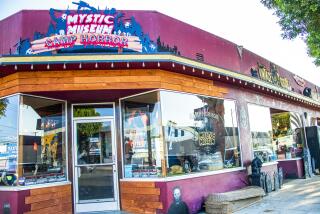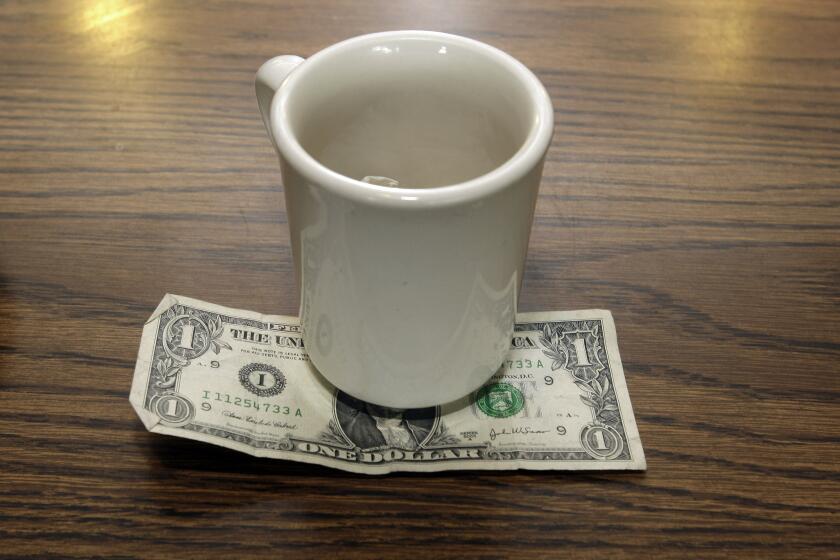Cambodia’s looted treasures
During the Cambodian civil war from 1970 to 1998, the Khmer Rouge and other paramilitary groups began decimating that country’s ancient sites in search of treasures to sell on the international art market. Along with arms dealing and drug smuggling, the looting and trafficking of artifacts became organized industries, which helped finance one of the 20th century’s most notorious regimes.
My colleagues and I have documented the painful scars from this plunder — desecrated tombs, beheaded statues and ransacked temples — at archaeological sites throughout Cambodia. We’ve spoken with looters, middlemen and dealers, and have even posed as collectors. The exact path of pillaged objects is admittedly difficult to trace. But when they do surface, more often than not, it is in the legitimate art world.
On April 4, federal agents filed suit againstSotheby’sin New York demanding that the auction house forfeit a 10th century statue of a Hindu warrior that was “illicitly removed” from a Cambodian temple. According to the complaint, the expertSotheby’shired to appraise the sculpture warned that it was “definitely stolen” and suggested returning it to Cambodia to “save everyone some embarrassment.” Sotheby’s contends that the piece entered the United States legally and promises to vigorously defend itself.
Across the country, the Norton Simon Museum in Pasadena is no doubt following the case closely, as the mate to the disputed Sotheby’s figure is on display there. Digital reconstructions and other studies demonstrate that the two sandstone fighters, which represent fabled enemies from the Hindu epic “The Mahabharata,” were once locked in combat at Prasat Chen, a temple in the ancient capital of Koh Ker in Cambodia. Now they are on opposite coasts of the United States with only their pedestals — and feet — left behind.
The U.S. and Cambodian governments, as well as scholars who have studied the site, firmly believe the pair were looted as Cambodia fell into civil war, then smuggled onto the European art market before eventually coming to America.
The Norton Simon, like Sotheby’s, denies any wrongdoing and notes that no one has formally challenged its ownership since the sculpture was acquired in 1976.
In recent years, a number of American collectors, galleries and museums — including the Metropolitan Museum in New York and the Honolulu Academy of Arts — have repatriated disputed objects to Cambodia after discovering that they were looted or stolen. Still, it remains difficult for countries such as Cambodia to recover their pillaged heritage in legal actions because of a high burden of proof, the statute of limitations and other bars to claims.
It’s easier to make a moral claim for repatriation. Most Cambodian “artworks” are sacred objects that were never meant to be bought or sold on the international market.
Without doubt, the art market has improved its practices regarding looted objects in the last decade, but it has not done enough for Cambodia. The Khmer Rouge may no longer be a threat — to temples or people — but the pillage of the nation’s archaeological sites continues, driven by an increasing demand for antiquities. With each artifact plundered, untold knowledge of the past is lost and a piece of the world’s heritage destroyed.
Most of us will never purchase an illicit antiquity from Cambodia or elsewhere, but we are complicit in these crimes. Our inaction allows them to continue. When we see an artifact for sale or on display, we must ask where it came from, and how. The answers should not be hard to provide, as valuable objects usually have a paper trail, from import declarations to insurance forms. But if there is no such provenance — or if it points to the artwork being a victim of war, civil unrest or criminal looting — such a piece should not be on the market or in a museum.
When archaeological sites are looted, the history of many is lost for the pleasure of a few. Buying, selling, displaying and even viewing such antiquities means condoning the destruction of art we love, and perhaps even encouraging it. At best, we may be funding criminals; at worst radicals, like the Khmer Rouge (Al Qaeda and the Taliban have also been linked to the illicit art trade).
Is that a legacy that Sotheby’s, the Norton Simon Museum or anyone would want?
Tess Davis has worked for Heritage Watch in Cambodia and is now executive director of the Lawyers’ Committee for Cultural Heritage Preservation in Washington. She is consulting with the Cambodian government on the Sotheby’s case.
More to Read
A cure for the common opinion
Get thought-provoking perspectives with our weekly newsletter.
You may occasionally receive promotional content from the Los Angeles Times.










